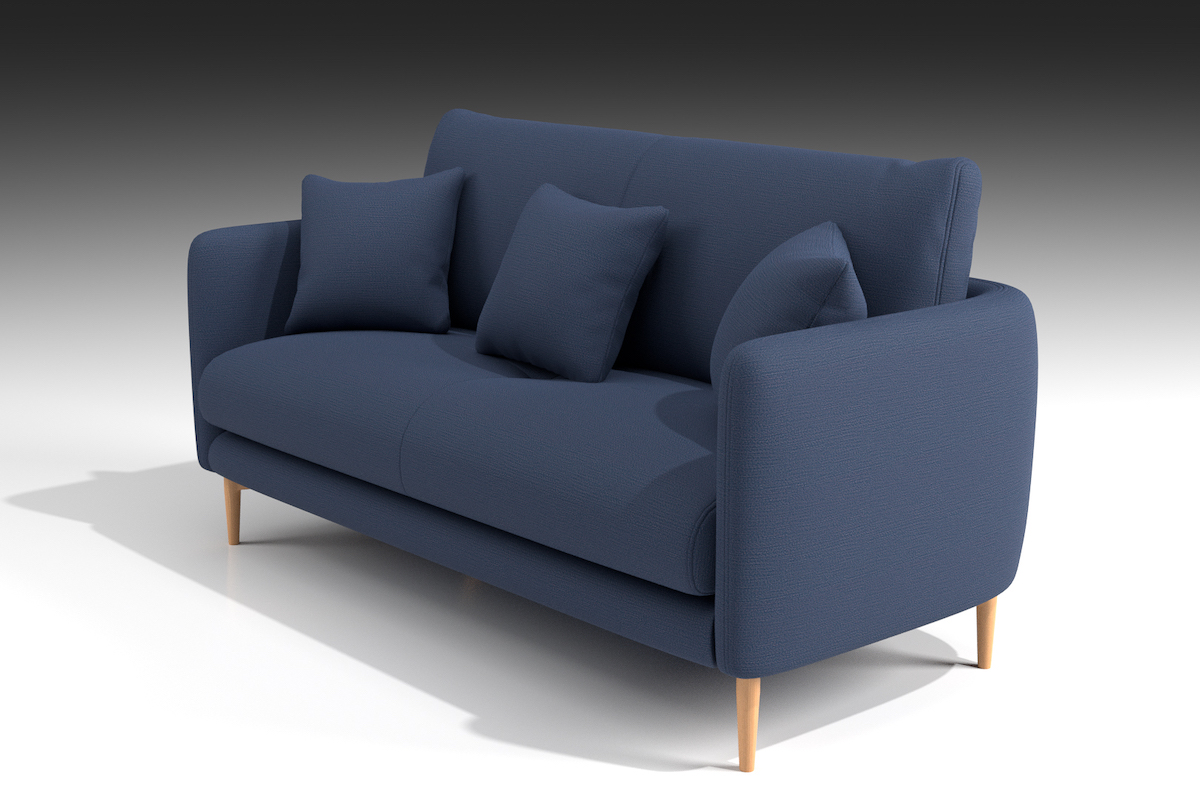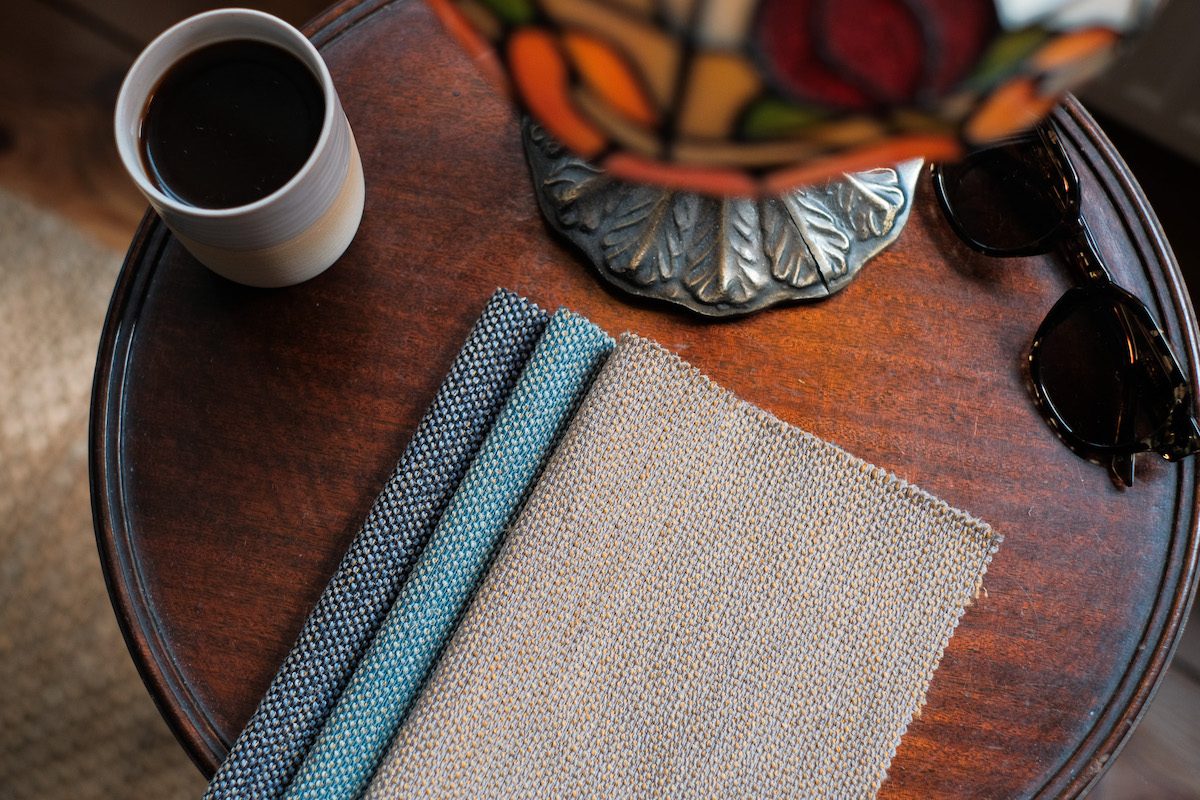Industry Insights: Ric Frampton and Sophie Cappe
Leading designers Ric Frampton and Sophie Cappe discuss the process behind Re.Wrap, which received a Design Guild Mark in 2024.
How did you get into the industry and what are your backgrounds?
Ric: As a furniture designer, my dad exposed me to the world of art, particularly design and manufacturing, from an early age. Growing up, ‘bring your kid to work’ days and school work experiences took place in factories filled with sawdust and heavy machinery. I later earned a degree in product design from Sheffield Hallam and spent 15 years as an in-house designer at three leading UK furniture manufacturers. In 2019, I launched my own design consultancy.
Sophie: From an early age, I was drawn to architecture and interior design, but it was product design that truly captured my interest. I went on to earn a master’s degree in industrial design from Strate School of Design near Paris, which set the foundation for my career. Since then, I’ve had the opportunity to design furniture, lighting, and visual merchandising displays for various companies across Sweden, France and the UK. I’ve been part of Re.Wrap and The Collective agency since 2021.
Can you talk me through Re.Wrap, which previously received a Design Guild Mark?
S: Re.Wrap is best known for its fully recyclable, low-carbon acoustic panels, designed for walls and ceilings. Alongside Ric, we spent the best part of two years refining a simple, high-performance system that uses just three materials—reclaimed PET, aluminium, and fabric—while ensuring everything is easy to install and completely circular.
What we believe sets us apart is our commitment to sustainability without compromise. Our panels don’t just perform at a Class A acoustic level; they also close the loop on waste. Through our PET TakeBack programme, we ensure that materials stay in circulation rather than ending up in landfill. Plus, everything is made right here in Britain, supporting local trade and keeping carbon emissions in check.
Were there any challenges in creating Re.Wrap?
The idea behind Re.Wrap was to create an acoustic solution that truly takes responsibility for waste. At its core, it’s a fabric-covered acoustic panel made from second-loop recycled PET, held together with aluminium supports—no adhesives, no unnecessary extras. The goal was to take PET waste, whether from post-production offcuts or our TakeBack scheme, and give it a second life as an acoustic infill.
The real challenge—and breakthrough—was developing our patented manufacturing system. This allows each panel to be completely disassembled and reassembled without degrading the material, making it a truly circular solution. Receiving the Design Guild Mark was a huge moment for us, recognising not just the design itself but the impact Re.Wrap has in pushing sustainable innovation forward.
How has being awarded a Design Guild Mark impacted your company? What has it meant to you?
R: The DGM has boosted my exposure to the design industry. The mark stands as a validation to my efforts which is supported by the judging process and past awardees. Personally, the sense of achievement inspires me to pursue my goals.
S: Receiving the Design Guild Mark was a huge moment for us, recognising not just the design itself but the impact Re.Wrap has in pushing sustainable innovation forward. It validated all the hard work that went into developing Re.Wrap—from refining the design to ensuring it could be fully circular without compromising performance.
The recognition has also helped open doors. It’s sparked conversations with designers and architects who are looking for genuinely sustainable solutions, and it’s reinforced our mission to push material circularity forward. More than anything, it’s encouraged us to keep innovating and proving that sustainability and great design can go hand in hand.
What advice would you give to a young British designer looking to make their mark on the industry?
R: Each generation of young designers have a different route to success, with a constantly evolving industry, technology and demands. However, design thinking and problem solving is largely the same and very valuable to society. My advice would be to constantly evaluate the demands of the market, be true and honest about your work, and be resilient and provocative. Disruption is good.
S: Similar to Ric, I’d say it’s important to stay up to date with the market—especially evolving technologies and sustainability, which are shaping the future of design.
I’d also recommend focusing on quality over quantity in your portfolio. It’s better to have a few strong, well-thought-out projects that showcase your skills and design thinking, rather than a large collection without depth. And whenever possible, get out there and network—attend fairs, conferences, and industry events. Meeting the right people and having meaningful conversations can open doors you never expected.
What are you currently working on and what are you excited for in 2025?
R: I’m heavily involved with workspace and how circularity principles can be beneficial to productivity and wellbeing.
S: We’ve got some really exciting things in the pipeline for 2025, but we can’t reveal too much just yet! What we can say is that we’re working on some innovative new installations and pushing the boundaries of sustainable acoustic design even further. Stay tuned—there’s more to come!
For more on The Collective and Re.Wrap, click here.


